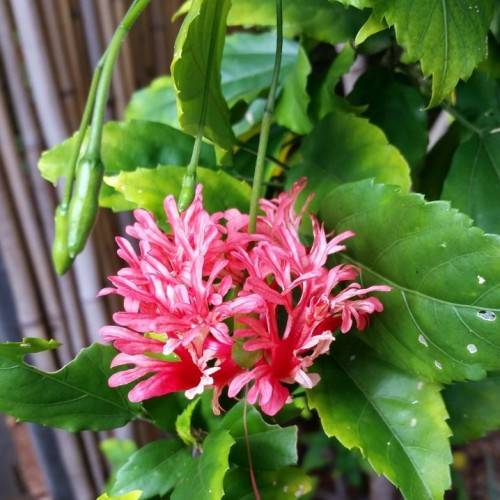
fringed rosemallow
Hibiscus schizopetalus
Cycle:
Perennial
Watering:
Average
Hardiness Zone:
10 - 11
Flowers:
Flowers
Sun:
full sun
Leaf:
Yes
Growth Rate:
Low
Maintenance:
Moderate
Drought Tolerant:
Yes
Salt Tolerant:
Yes
Tropical:
Yes
Care Level:
Medium
watering
Fringed rosemallow requires regular watering and soil that is consistently moist. Water it at least once per week, making sure to soak the soil deeply and evenly. Avoid oversaturating it, as hibiscus does not tolerate standing water, and make sure to water it during its active growing season. During especially hot weather, you may need to water your fringed rosemallow more frequently.
sunlight
Fringed rosemallow (Hibiscus schizopetalus) prefers full sun to partial shade. It should receive at least 6-8 hours of direct sunlight per day. For strong growth and flowering, the plant will need 12-14 hours of sunlight when grown indoors. Fringed rosemallow is a tropical species, so it can benefit from a period of darkness each night..
pruning
Fringed rosemallow should be pruned lightly at the beginning of spring or in late summer to encourage more abundant flowering. Removing dead or damaged branches is also recommended. Pruning also helps to maintain a neat and tidy shape, and to remove any spent or damaged blooms. Prune back only 1-third to 1-half of the plant each year. Prune back stems that have already flowered, and leave the new growth to promote flowering in the next season. It is important to keep in mind that over pruning this species can result in fewer flowering stems than desired.
